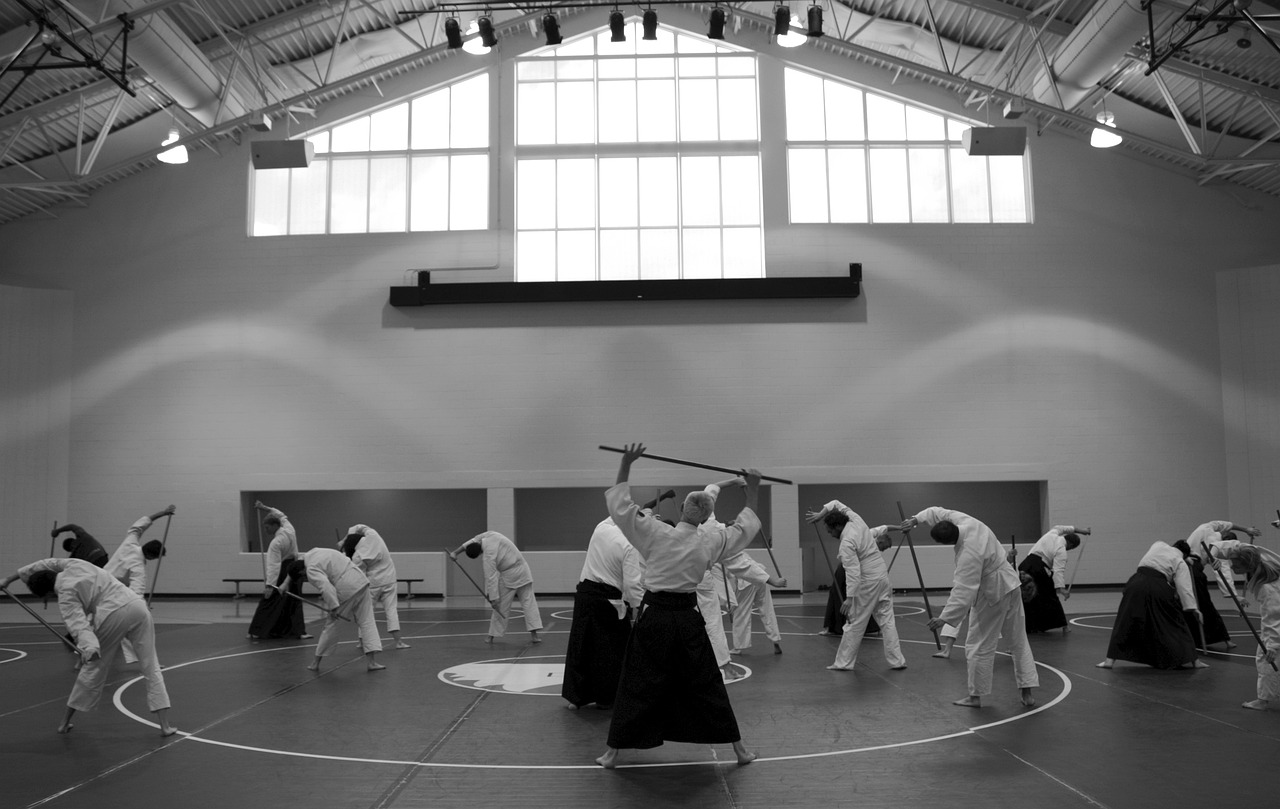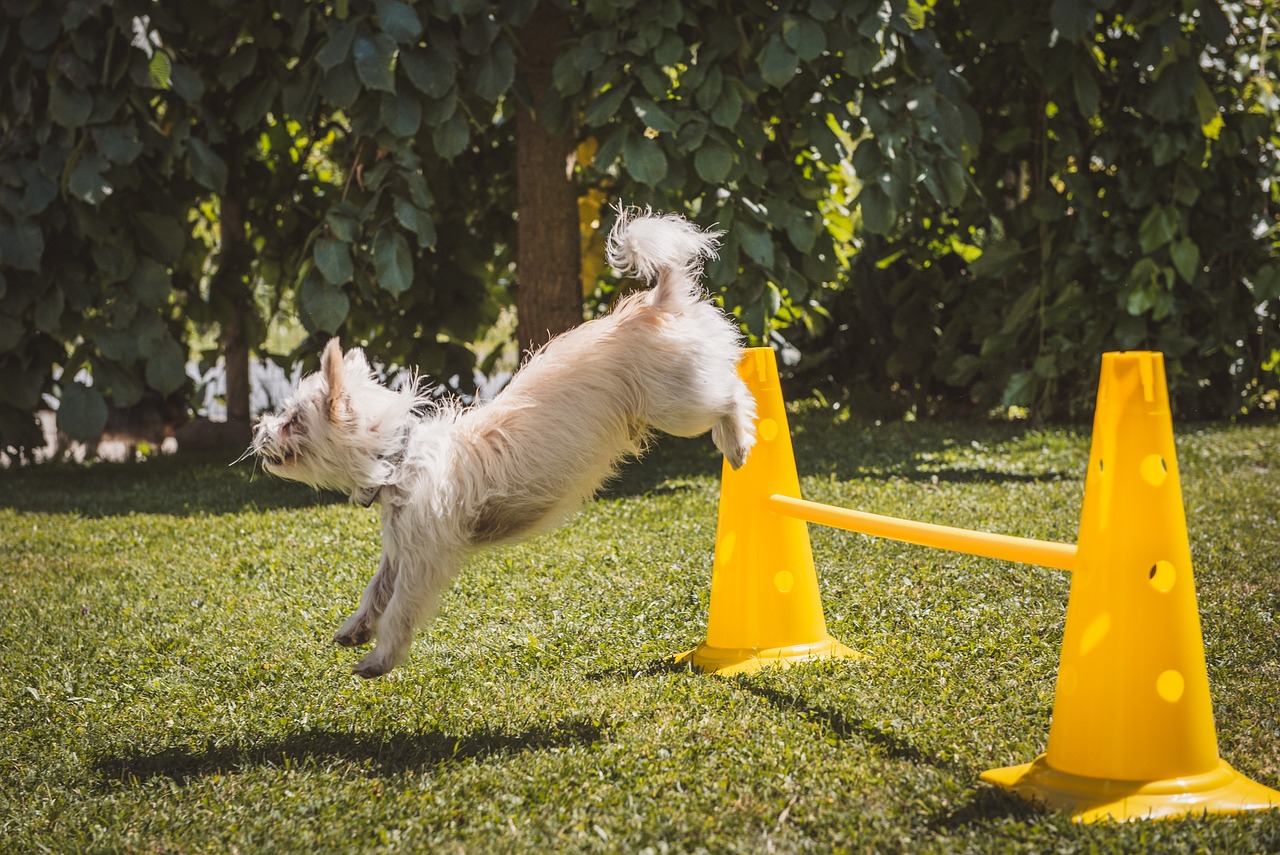Benefits of Teaching Your Kids Self-Defense Techniques
In today's world, equipping your children with self-defense skills is more than just a precaution; it’s a vital part of their personal development. When you teach your kids self-defense techniques, you’re not merely showing them how to throw a punch or escape a hold; you’re opening the door to a myriad of benefits that stretch beyond the dojo. From enhancing their confidence to improving their physical fitness and instilling a sense of personal safety awareness, the advantages are profound and far-reaching. So, let’s dive into the incredible benefits of teaching your kids self-defense techniques!
Teaching self-defense empowers children, helping them develop self-esteem and confidence. Imagine your child stepping into a room filled with peers, standing tall with an air of assurance. As they learn to protect themselves, they gain a sense of control and assertiveness in various situations. This newfound confidence doesn’t just stay confined to the dojo; it spills over into their daily lives, affecting how they interact with others and handle challenges. They start believing in their abilities, and that belief is contagious. Confidence is like a superpower; once they harness it, they can tackle any obstacle with a positive mindset!
Engaging in self-defense training encourages physical activity, improving children's overall fitness. It’s not just about learning to defend themselves; it’s also about getting them moving and shaking off those sedentary habits that are all too common in today’s digital age. Self-defense techniques enhance their strength, coordination, and agility. They’re not just exercising; they’re having fun while doing it! This can promote a healthy lifestyle that can last a lifetime. Plus, who wouldn’t want their kids to be active and fit? Think of it as a two-for-one deal: they learn to fight and stay healthy at the same time!
Self-defense techniques require precise movements, which can significantly enhance a child's coordination. When practicing these skills, children develop their motor skills and body awareness. It’s like learning to ride a bike; once they get the hang of it, everything becomes smoother. The physicality involved in self-defense helps them understand their body’s capabilities, making them more agile in other activities, whether it’s sports or just playing outside with friends.
Training in self-defense promotes better balance and agility, crucial for various physical activities. Children learn to move quickly and efficiently, benefiting their overall athletic performance. Think of it as building a strong foundation; the better their balance and agility, the more skilled they become in all kinds of sports and physical challenges. It’s like giving them a toolkit full of skills they can use no matter where they are!
Regular self-defense practice builds endurance, allowing children to engage in physical activities for longer periods. This increased stamina supports their health and fitness goals. Imagine your child running around the playground without getting tired, outlasting their friends during a game of tag. That’s the power of endurance! Not only does it make them more active, but it also teaches them the value of perseverance and pushing through challenges.
Self-defense training demands concentration, helping children improve their focus and attention span. In a world filled with distractions, having the ability to concentrate is like having a secret weapon. These skills can translate to better performance in academics and other activities. When kids learn to focus on their movements and techniques, they also learn to apply that focus to their studies, homework, and even chores at home. It's a win-win situation!
Teaching self-defense instills a sense of personal safety awareness in children. They learn to recognize potential dangers and respond appropriately, fostering a proactive mindset. This awareness is crucial, especially as they navigate social situations. It’s not just about knowing how to react in a fight; it’s about understanding their environment and making wise choices to stay safe.
Children become adept at identifying various threats, whether verbal or physical. This awareness equips them to navigate social situations more safely and confidently. Think of it as giving them a pair of superhero glasses that help them see potential dangers before they arise. This skill can be invaluable in school, at playdates, or anywhere they find themselves.
Self-defense training encourages children to make informed decisions in potentially dangerous scenarios. They learn to assess situations and choose the best course of action for their safety. It’s like giving them a mental map that guides them through tricky situations. They start to understand the importance of thinking before acting, which can keep them safe in various circumstances.
- Is self-defense training suitable for all age groups? Yes! Self-defense techniques can be adapted for different ages and skill levels.
- How long does it take to see improvements? With regular practice, children can start noticing improvements in their confidence and physical fitness within a few weeks.
- Do I need to be physically fit to enroll my child in self-defense classes? Not at all! Self-defense classes cater to all fitness levels, and the focus is on learning and improving.

Boosting Confidence
This article explores the numerous advantages of equipping children with self-defense skills, from enhancing their confidence to promoting physical fitness and personal safety.
Teaching self-defense is like giving your child a superhero cape; it empowers them in ways that extend far beyond just physical skills. As they learn the techniques to protect themselves, they not only acquire practical knowledge but also experience a significant boost in their self-esteem and confidence. Imagine your child walking into a room, head held high, knowing they have the tools to handle various situations. This newfound assertiveness can transform their interactions, whether in school, sports, or social settings.
When children practice self-defense, they often face challenges that require them to step outside their comfort zones. Each time they successfully execute a move or defend against a simulated attack, they experience a rush of accomplishment. This sense of achievement is crucial—it teaches them that they can overcome obstacles. Just like learning to ride a bike, the initial wobbles and falls are part of the journey, but with persistence, they gain balance and confidence.
Moreover, self-defense training fosters a sense of control over their environment. Kids learn that they are not helpless; they can take action to protect themselves. This realization is empowering and helps them develop a proactive mindset. For instance, when faced with a challenging situation, instead of feeling overwhelmed, they can draw upon their training to assess the situation calmly and respond effectively. It's like having a mental toolkit that they can rely on when needed.
As they practice regularly, children also learn the importance of discipline and commitment. Attending classes, practicing techniques, and striving for improvement instills a sense of responsibility. They begin to understand that their efforts directly correlate with their progress. This connection between hard work and achievement is a powerful lesson that transcends the dojo or gym, influencing their academic pursuits and personal goals as well.
In addition, self-defense training often involves teamwork and partner drills, which can enhance social skills. Working with peers allows children to build friendships and learn to communicate effectively. They develop trust in one another, fostering a supportive community that reinforces their confidence. It's a beautiful cycle: as they grow more confident in their abilities, they also become more willing to help others, creating a positive and encouraging environment.
In summary, teaching your kids self-defense is not just about physical skills; it's a holistic approach to building confidence that will serve them well throughout their lives. They learn to face challenges head-on, embrace responsibility, and support their peers, all while feeling empowered and capable. So, why not equip them with this invaluable gift?
- What age is appropriate to start self-defense training? Most programs cater to children as young as 5 years old, but it's best to find a class that matches your child's maturity level.
- Will self-defense training make my child more aggressive? No, self-defense training emphasizes control and respect, teaching children to use their skills only in necessary situations.
- How often should my child practice self-defense? Regular practice, ideally 1-2 times a week, will help reinforce skills and boost confidence.

Physical Fitness
Engaging in self-defense training is not just about learning how to protect oneself; it’s a thrilling way to boost among children. In a world where screens dominate, getting kids to move can be a challenge. However, self-defense offers an exciting alternative that encourages them to be active. As children practice various techniques, they engage in a full-body workout that enhances their strength, flexibility, and overall fitness. Imagine your child, once hesitant and shy, now bursting with energy and vitality after a self-defense class!
When children participate in self-defense, they don’t just learn how to throw a punch or block an attack; they also cultivate essential physical skills. For instance, the movements involved in self-defense require a great deal of coordination. Each kick, punch, and dodge involves precise timing and body control. This practice translates into improved motor skills that can benefit them in sports and other physical activities. Think of it as a dance; every move needs to be in sync to create a beautiful performance. The more they practice, the more graceful and coordinated they become.
Moreover, self-defense training is a fantastic way to develop balance and agility. These attributes are crucial not only for martial arts but for all physical activities. Whether it’s running, jumping, or playing soccer, having a solid foundation of balance enables children to perform better. They learn to shift their weight effectively, which helps them avoid falls and injuries. Just picture your child effortlessly navigating through an obstacle course, showcasing their newfound skills!
Another incredible benefit of regular self-defense practice is the enhancement of endurance. As children engage in rigorous training sessions, they build stamina, allowing them to participate in physical activities for longer durations without fatigue. This increased endurance doesn’t just aid in self-defense; it spills over into their daily lives, making them more active and less prone to the lethargy that often accompanies sedentary habits. It’s like training for a marathon; the more they practice, the longer they can go!
In addition to these physical benefits, self-defense training also fosters a sense of discipline and commitment. Children learn the importance of consistency and hard work, which are essential traits that extend beyond the dojo or training mat. They begin to understand that improvement takes time and effort, instilling a growth mindset that can help them in academics and other pursuits. So, while they’re busy learning how to defend themselves, they’re also cultivating valuable life skills that will serve them well into adulthood.
Ultimately, self-defense is more than just a physical activity; it’s a holistic approach to fitness that nurtures both the body and mind. By encouraging children to engage in this empowering practice, parents are not only enhancing their physical health but also setting them up for a lifetime of confidence, resilience, and well-being.
- What age is appropriate to start self-defense training? Most self-defense programs cater to children as young as 5 years old, focusing on age-appropriate techniques and safety.
- Is self-defense training safe for kids? Yes, when taught by qualified instructors, self-defense training emphasizes safety and proper technique to minimize the risk of injury.
- How often should kids practice self-defense? Regular practice is key; ideally, children should train at least once or twice a week to see significant improvements.
- Can self-defense help with bullying? Absolutely! Self-defense training can empower children with the skills and confidence to stand up for themselves in challenging situations.

Improved Coordination
This article explores the numerous advantages of equipping children with self-defense skills, from enhancing their confidence to promoting physical fitness and personal safety.
Teaching self-defense empowers children, helping them develop self-esteem and confidence. As they learn to protect themselves, they gain a sense of control and assertiveness in various situations.
Engaging in self-defense training encourages physical activity, improving children's overall fitness. It enhances their strength, coordination, and agility while promoting a healthy lifestyle and combating sedentary habits.
Self-defense techniques require precise movements, which can significantly enhance a child's coordination. As children practice these skills, they not only learn how to defend themselves but also develop their motor skills and body awareness. Imagine a child learning to throw a punch or execute a kick; these actions are not just about strength but also about timing and spatial awareness. The more they practice, the better they become at synchronizing their movements, resulting in improved overall coordination.
Moreover, self-defense training often involves a variety of drills that challenge children to react quickly and accurately. This constant engagement helps in refining their reflexes and hand-eye coordination. For instance, when a child learns to block an incoming strike, they are simultaneously honing their ability to anticipate movements and react accordingly. It's like playing a game of chess, where every move counts, and being aware of the opponent's strategy is crucial.
As children progress in their self-defense training, they may experience a noticeable improvement in their coordination not just in martial arts but in other physical activities as well. This can translate to better performance in sports, dance, or even simple activities like riding a bike or playing tag. In fact, studies have shown that children involved in martial arts often exhibit enhanced coordination compared to their peers who do not participate in such activities.
To illustrate the benefits of improved coordination through self-defense, consider the following table:
| Activity | Coordination Skill Developed |
|---|---|
| Punching Drills | Hand-eye coordination |
| Blocking Techniques | Reaction time and reflexes |
| Kicking Exercises | Balance and body control |
Training in self-defense promotes better balance and agility, crucial for various physical activities. Children learn to move quickly and efficiently, benefiting their overall athletic performance. Just like a dancer needs to maintain poise while executing complex moves, self-defense practitioners must find their center of gravity to perform techniques effectively. This not only aids in their martial arts practice but also enriches their ability to engage in everyday activities without stumbling or losing control.
Regular self-defense practice builds endurance, allowing children to engage in physical activities for longer periods. This increased stamina supports their health and fitness goals. Think of it as a muscle; the more you train it, the stronger it becomes. Children who practice self-defense often find themselves able to run longer, play harder, and enjoy their favorite activities without tiring quickly.
Self-defense training demands concentration, helping children improve their focus and attention span. These skills can translate to better performance in academics and other activities.
Teaching self-defense instills a sense of personal safety awareness in children. They learn to recognize potential dangers and respond appropriately, fostering a proactive mindset.
Children become adept at identifying various threats, whether verbal or physical. This awareness equips them to navigate social situations more safely and confidently.
Self-defense training encourages children to make informed decisions in potentially dangerous scenarios. They learn to assess situations and choose the best course of action for their safety.
- At what age can my child start self-defense training? Most programs are suitable for children as young as 5 or 6 years old, focusing on basic techniques and awareness.
- Will self-defense training make my child aggressive? No, self-defense training emphasizes discipline, respect, and self-control, teaching children to use their skills responsibly.
- How often should my child practice self-defense? Regular practice is key; ideally, children should train at least once or twice a week to see improvements.
- Is self-defense training safe for kids? Yes, when conducted under the supervision of qualified instructors, self-defense training is designed to be safe and age-appropriate.

Balance and Agility
This article explores the numerous advantages of equipping children with self-defense skills, from enhancing their confidence to promoting physical fitness and personal safety.
Teaching self-defense empowers children, helping them develop self-esteem and confidence. As they learn to protect themselves, they gain a sense of control and assertiveness in various situations.
Engaging in self-defense training encourages physical activity, improving children's overall fitness. It enhances their strength, coordination, and agility while promoting a healthy lifestyle and combating sedentary habits.
Self-defense techniques require precise movements, which can significantly enhance a child's coordination. Practicing these skills helps develop their motor skills and body awareness.
Training in self-defense plays a crucial role in promoting better balance and agility. Picture this: when a child learns to execute a kick or a dodge, they are not just performing a move; they are engaging their entire body in a dance of motion. This dynamic training helps them understand their body mechanics, enabling them to shift their weight efficiently and maintain stability even in challenging situations.
Balance is not merely about standing still; it's about having the ability to move fluidly from one position to another. In self-defense, children practice techniques that require them to maintain their center of gravity while executing powerful strikes or evasive maneuvers. This kind of training fosters a deep understanding of their own physical capabilities, which can translate to other areas of their lives, such as sports and everyday activities.
Agility, on the other hand, is all about speed and quickness. As children learn to react swiftly to various scenarios during training, they develop the ability to change direction rapidly without losing their footing. This skill is particularly valuable not only in self-defense but also in sports like soccer, basketball, or gymnastics, where quick movements can make all the difference. The benefits of improved balance and agility are numerous:
- Enhanced Athletic Performance: Better balance and agility can lead to improved performance in sports.
- Injury Prevention: A strong sense of balance helps prevent falls and injuries.
- Greater Body Awareness: Children become more attuned to their movements and how to control them.
In essence, teaching self-defense is not just about learning how to fight; it's about equipping children with the tools to navigate their physical world more effectively. They gain confidence in their movements, making them feel empowered and capable. This newfound balance and agility can transform their approach to physical activities, making them more enthusiastic participants in sports and play.
Regular self-defense practice builds endurance, allowing children to engage in physical activities for longer periods. This increased stamina supports their health and fitness goals.
Self-defense training demands concentration, helping children improve their focus and attention span. These skills can translate to better performance in academics and other activities.
Teaching self-defense instills a sense of personal safety awareness in children. They learn to recognize potential dangers and respond appropriately, fostering a proactive mindset.
Children become adept at identifying various threats, whether verbal or physical. This awareness equips them to navigate social situations more safely and confidently.
Self-defense training encourages children to make informed decisions in potentially dangerous scenarios. They learn to assess situations and choose the best course of action for their safety.
- What age should my child start self-defense training? - It's generally recommended for children to start around ages 5 to 7, but it can vary based on maturity and interest.
- Is self-defense training safe for children? - Yes, when conducted by qualified instructors, self-defense training is designed to be safe and age-appropriate.
- Will self-defense training make my child more aggressive? - No, self-defense training emphasizes discipline and respect, teaching children to use their skills responsibly.
- How long does it take to see improvements? - Many children notice improvements in their physical abilities and confidence within a few weeks of consistent training.

Endurance Development
Engaging in self-defense training is not just about learning how to throw a punch or execute a kick; it's a comprehensive workout that significantly enhances a child's endurance. Imagine your child, initially panting after a short sprint, gradually transforming into a little powerhouse capable of sustaining high-energy activities for longer periods. This transformation is not just physical; it cultivates a sense of achievement and resilience that boosts their overall confidence.
When children participate in self-defense classes, they engage in a variety of exercises that challenge their cardiovascular system. These activities, which may include drills, sparring sessions, and conditioning exercises, help build stamina over time. As their endurance improves, they can participate in other sports and physical activities with greater ease. For instance, a child who practices martial arts regularly may find that they can run longer distances or play soccer without getting tired as quickly. This newfound stamina not only supports their health but also encourages them to be more active outside of class.
To illustrate the benefits of endurance development through self-defense, consider the following table that outlines key aspects of how self-defense training enhances physical endurance:
| Aspect | Description |
|---|---|
| Cardiovascular Health | Regular training elevates heart rate, improving cardiovascular function and stamina. |
| Muscle Endurance | Repetitive movements in self-defense build muscle endurance, allowing for sustained physical exertion. |
| Recovery Time | With improved endurance, children experience shorter recovery times between activities. |
| Increased Motivation | As they see improvements in their endurance, children become more motivated to engage in physical activities. |
Moreover, the discipline and commitment required in self-defense training teach children the importance of perseverance. They learn that improvement takes time and effort, which is a lesson that transcends the dojo or training facility. This understanding can lead to better performance in school and other areas of life. Imagine your child applying the same determination they show in class to their studies or hobbies, leading to a well-rounded and successful individual.
In summary, self-defense training is a powerful tool for developing endurance in children. It not only enhances their physical capabilities but also instills essential life skills. As they grow stronger and more resilient, they learn to tackle challenges both on and off the mat, setting the stage for a bright and active future.
- What age is appropriate for children to start self-defense training?
Most self-defense programs cater to children as young as 5 or 6 years old, focusing on basic techniques and safety awareness. - Will self-defense training make my child aggressive?
Self-defense training teaches children to control their impulses and use their skills responsibly, promoting confidence rather than aggression. - How often should my child practice self-defense?
Consistency is key! Ideally, children should practice at least 1-2 times a week to see significant improvements. - Can self-defense training help with bullying?
Yes, learning self-defense can empower children to stand up for themselves and recognize when to seek help, reducing the likelihood of becoming a target.

Enhanced Focus
When children engage in self-defense training, they are not just learning how to throw a punch or execute a kick; they are also sharpening their mental acuity. The very nature of self-defense requires a high level of concentration and awareness. Imagine a child in a dojo, eyes fixed on their instructor, absorbing every detail of the movements being demonstrated. This intense focus is akin to a musician perfecting their craft, where every note matters. As they practice, children learn to block out distractions and hone in on the task at hand, which is a skill that transcends the dojo and seeps into their daily lives.
Moreover, this enhanced focus can lead to improved performance in other areas, particularly in academics. Studies have shown that children who participate in activities requiring concentration tend to perform better in school. They develop the ability to sit still, listen attentively, and process information more effectively. It's like training a muscle; the more they work on their focus in self-defense, the stronger it becomes in other situations. For instance, during a math test, a child with a well-trained focus can sift through problems more efficiently, reducing anxiety and improving their chances of success.
Additionally, self-defense training often involves memorizing techniques and sequences, which further boosts cognitive function. Children learn to recall complex movements and apply them in real-time, which can enhance their memory and problem-solving skills. When faced with a challenging situation, they can think critically and make swift decisions, much like a chess player anticipating their opponent's moves. This ability to think on their feet is invaluable, not just in self-defense scenarios, but in everyday life.
In conclusion, the benefits of enhanced focus gained from self-defense training are multifaceted. From improved academic performance to better decision-making abilities, the skills acquired extend far beyond the physical realm. By investing time in self-defense, parents are not only teaching their children how to protect themselves but are also equipping them with essential life skills that will serve them well into adulthood.
- What age should my child start learning self-defense?
While there's no specific age, many programs cater to children as young as 5. It's essential to find a class that matches their maturity level. - Is self-defense training safe for kids?
Yes, when taught by qualified instructors, self-defense training is generally safe. Classes focus on technique and control to minimize the risk of injury. - How often should my child practice self-defense?
Regular practice is key to mastering techniques. Aim for at least one session per week, but more frequent practice can yield better results. - Can self-defense training help with bullying?
Absolutely! Self-defense teaches children how to stand up for themselves and boosts their confidence, which can deter bullies.

Personal Safety Awareness
This article explores the numerous advantages of equipping children with self-defense skills, from enhancing their confidence to promoting physical fitness and personal safety.
Teaching self-defense empowers children, helping them develop self-esteem and confidence. As they learn to protect themselves, they gain a sense of control and assertiveness in various situations.
Engaging in self-defense training encourages physical activity, improving children's overall fitness. It enhances their strength, coordination, and agility while promoting a healthy lifestyle and combating sedentary habits.
Self-defense techniques require precise movements, which can significantly enhance a child's coordination. Practicing these skills helps develop their motor skills and body awareness.
Training in self-defense promotes better balance and agility, crucial for various physical activities. Children learn to move quickly and efficiently, benefiting their overall athletic performance.
Regular self-defense practice builds endurance, allowing children to engage in physical activities for longer periods. This increased stamina supports their health and fitness goals.
Self-defense training demands concentration, helping children improve their focus and attention span. These skills can translate to better performance in academics and other activities.
Teaching self-defense instills a sense of personal safety awareness in children. They learn to recognize potential dangers and respond appropriately, fostering a proactive mindset. Imagine your child walking down the street, head held high, eyes scanning their surroundings with confidence. This ability to be aware of their environment is not just a skill; it's a vital life lesson that can keep them safe. Through self-defense training, children become adept at identifying various threats, whether verbal or physical. This awareness equips them to navigate social situations more safely and confidently.
Moreover, self-defense training encourages children to make informed decisions in potentially dangerous scenarios. They learn to assess situations and choose the best course of action for their safety. It’s like giving them a mental toolkit filled with strategies for dealing with unexpected challenges. For instance, if they encounter a stranger acting suspiciously, they won’t just freeze in fear; instead, they’ll know how to react calmly and wisely. This proactive approach to personal safety can significantly reduce anxiety and fear, allowing children to enjoy their lives to the fullest.
In essence, the skills learned through self-defense training extend beyond physical techniques. They foster a sense of empowerment and responsibility in children, making them more aware of their surroundings and capable of handling various situations. The benefits are not just limited to the dojo or training mat; they translate to everyday life, making children more confident and secure individuals.
Q: At what age can my child start learning self-defense?
A: Many self-defense programs cater to children as young as 4 or 5 years old. It's essential to find a program that matches your child's maturity and physical abilities.
Q: What types of self-defense techniques should my child learn?
A: Focus on practical techniques that emphasize awareness, avoidance, and de-escalation strategies. Programs that incorporate Brazilian Jiu-Jitsu, Krav Maga, or Karate can be effective.
Q: Will self-defense training make my child more aggressive?
A: No, self-defense training emphasizes self-control and respect. The goal is to empower children to protect themselves without resorting to violence.
Q: How can I support my child in their self-defense journey?
A: Encourage regular practice, attend classes with them if possible, and discuss what they learn at home. This support can enhance their confidence and understanding.

Recognizing Threats
One of the most vital skills children can learn through self-defense training is the ability to recognize potential threats. In today's world, where dangers can lurk in unexpected places, being aware of one's surroundings is crucial. Teaching kids to identify threats, whether they are verbal, physical, or situational, empowers them to navigate their environment with greater confidence and safety.
Children often find themselves in social situations where they may encounter bullying, peer pressure, or even predatory behavior. By learning to recognize the signs of these threats, they can develop a keen sense of awareness. For instance, they might learn to spot body language that indicates aggression or hear words that could escalate into conflict. This ability to read the room can be a game-changer for their personal safety.
Furthermore, the process of recognizing threats is not just about identifying danger; it's also about understanding the context of a situation. Children can be taught to ask themselves questions such as:
- Is this person making me feel uncomfortable?
- Are there any warning signs that something might go wrong?
- How can I remove myself from this situation safely?
By engaging in these thought processes, kids learn to assess their surroundings critically, which is a skill that will benefit them throughout their lives. They become more adept at trusting their instincts, an invaluable trait when it comes to personal safety. Moreover, this training fosters a sense of empowerment; they realize that they have the tools to protect themselves, which can significantly reduce feelings of vulnerability.
In addition to personal awareness, recognizing threats also involves understanding the importance of seeking help when needed. Children should be encouraged to communicate openly about their feelings and experiences, especially if they sense danger. Teaching them to approach trusted adults when they feel threatened can create a support system that enhances their safety.
Ultimately, the ability to recognize threats is about more than just self-defense techniques; it's about cultivating a mindset of proactivity and awareness. By equipping children with these skills, we are not only helping them defend themselves physically but also nurturing their emotional intelligence and resilience. This holistic approach to self-defense training prepares them to face the world with confidence, ensuring they are ready to tackle any challenges that come their way.
Q: At what age should I start teaching my child self-defense?
A: It's never too early to start! Many programs cater to young children, focusing on basic awareness and safety skills. As they grow older, you can introduce more advanced techniques.
Q: What if my child is shy or reluctant to participate?
A: Encourage them gently. Self-defense training can actually help shy children build confidence. Look for classes that emphasize fun and teamwork to ease their hesitation.
Q: How can I reinforce these skills at home?
A: Regularly discuss safety scenarios and practice role-playing different situations. This will help them internalize what they've learned in class.
Q: Are there specific self-defense programs recommended for children?
A: Look for programs that are age-appropriate, focus on personal safety, and teach conflict resolution alongside physical techniques. Many martial arts schools offer classes specifically tailored for kids.

Safe Decision-Making
When it comes to self-defense, one of the most crucial skills that children can develop is the ability to make safe decisions in potentially dangerous situations. This isn't just about knowing how to throw a punch or escape a hold; it's about cultivating a mindset that prioritizes safety and awareness. Imagine your child walking down the street, and suddenly they encounter a situation that feels off. Do they know how to assess the environment? Are they equipped to make quick, informed decisions? Teaching self-defense goes beyond physical techniques; it instills a sense of judgment that can be life-saving.
Through self-defense training, children learn to evaluate their surroundings and recognize signs of potential threats. This ability to identify danger is not just a skill; it's a superpower that allows them to navigate the world with confidence. For instance, if they notice someone acting suspiciously, they can choose to cross the street or find a trusted adult instead of walking straight into a potentially harmful situation. This proactive approach is what separates a child who reacts from one who anticipates and avoids danger.
Moreover, self-defense training encourages children to think critically about their choices. They learn to ask themselves essential questions, such as:
- What are my options in this situation?
- Who can I turn to for help?
- Is it safer to confront or to walk away?
By engaging in these thought processes, children become adept at making informed decisions quickly. This skill is invaluable not only in self-defense scenarios but also in everyday life, from navigating social interactions to managing peer pressure. The ability to weigh options and choose wisely can lead to better outcomes, whether they're dealing with a bully at school or a tricky social situation with friends.
In addition to these practical skills, self-defense training also fosters a sense of responsibility. Children learn that their actions have consequences, both for themselves and those around them. This understanding encourages them to act thoughtfully rather than impulsively, reinforcing the importance of making safe decisions. As they progress in their training, they start to appreciate that avoiding conflict is often the best strategy, and they become more adept at de-escalating situations before they turn dangerous.
In conclusion, teaching children safe decision-making through self-defense training equips them with skills that extend far beyond physical confrontations. It empowers them to be aware, proactive, and responsible individuals who can navigate the complexities of the world with confidence and safety. This is not just about self-defense; it's about preparing them for life.
Q: At what age should I start teaching my child self-defense?
A: It's never too early to start! Many programs cater to children as young as four or five, focusing on basic awareness and safety skills. As they grow, you can introduce more advanced techniques.
Q: Will self-defense training make my child more aggressive?
A: Not at all! In fact, self-defense training often teaches children to avoid conflict and use their skills responsibly. The goal is to empower them, not to promote aggression.
Q: How can I find a good self-defense program for my child?
A: Look for local martial arts schools or community centers that offer classes specifically designed for children. Check reviews and ask for recommendations from other parents to ensure a positive experience.
Q: What if my child is shy or reluctant to participate?
A: Encourage them gently and emphasize the fun aspects of learning self-defense. Many programs foster a supportive environment where children can build confidence at their own pace.
Frequently Asked Questions
- Why should I teach my child self-defense?
Teaching your child self-defense is not just about physical protection; it’s about empowering them. It boosts their confidence, enhances their physical fitness, and instills a sense of personal safety awareness. Imagine your child walking into a room full of kids, head held high, knowing they can handle themselves if needed. That's the kind of confidence self-defense can cultivate!
- At what age can children start learning self-defense?
Children can start learning self-defense as early as 4 or 5 years old! Many programs are designed specifically for younger kids, focusing on basic techniques and safety awareness. Just like learning to ride a bike, the earlier they start, the more comfortable they’ll become with the skills as they grow.
- What are the physical benefits of self-defense training?
Self-defense training offers a plethora of physical benefits! It improves strength, coordination, balance, and agility. Think of it as a fun workout that keeps your child active while teaching them valuable skills. Plus, it helps combat sedentary habits that are becoming increasingly common in today’s tech-driven world.
- How does self-defense training enhance focus and concentration?
Self-defense requires a high level of concentration and mental engagement. As children practice techniques, they learn to focus on their movements and surroundings. This heightened awareness can spill over into their academic life, leading to better grades and improved performance in other activities!
- Can self-defense training help my child in social situations?
Absolutely! Self-defense training teaches children to recognize potential threats and respond appropriately. This awareness helps them navigate social situations with confidence, making them less likely to become victims of bullying or peer pressure. It’s like giving them a superhero cape that boosts their social skills!
- What if my child is not physically strong?
No worries! Self-defense isn’t just about brute strength; it’s about technique and strategy. Many self-defense techniques focus on using an opponent's energy against them, which means even smaller or less physically strong children can effectively defend themselves. It’s all about learning the right moves!
- How often should my child practice self-defense?
Consistency is key! Ideally, children should practice self-defense techniques at least once or twice a week. Regular training helps reinforce their skills and keeps them physically active. Think of it like learning a musical instrument; the more they practice, the better they become!
- Is self-defense training safe for kids?
Yes, self-defense training is generally safe for kids when conducted in a controlled environment with qualified instructors. Safety is always a priority, and classes are designed to teach skills without putting anyone at risk. It’s a great way for kids to learn how to protect themselves while having fun!



















